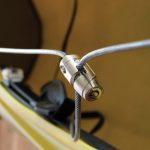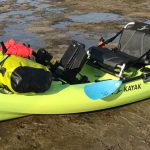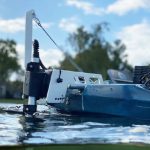We’ve done some deep research to find the best kayak roof racks. Here's our list of the best stackers, J-racks, cradles, and load-assist racks. Enjoy!
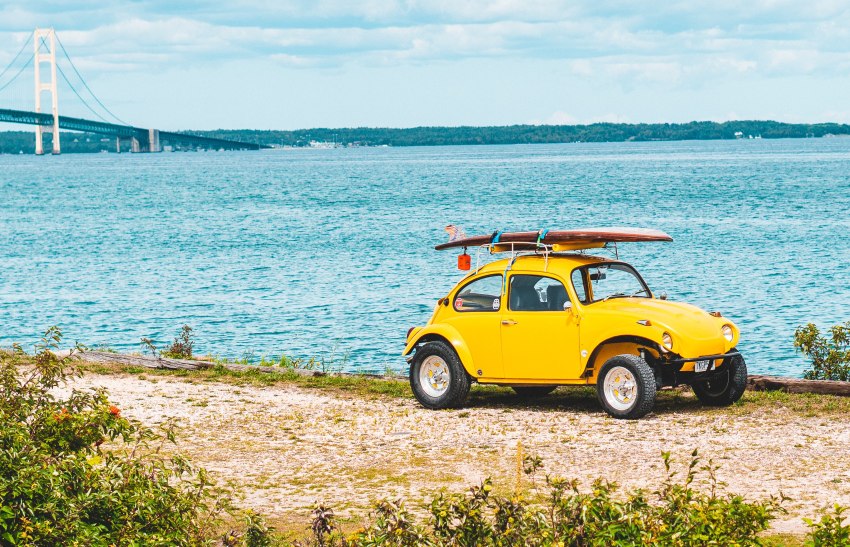
So you’ve bought yourself a snazzy new kayak and you’re ready to hit the water for a day paddling the ocean, lake, or river.
There’s just one problem: the kayak roof rack you’ve bought isn’t due to be delivered until the following week. Or (and this happened to me!) you just plum forgot to buy a roof rack in the first place.
So now what? Do you really have to wait to take your kayak out? Surely there has to be some way to load a kayak onto your car without a rack. I’ll bet you’re already eyeing your car’s roof crossbars and trying to figure out how to make it work.
Below, we’re going to talk about all the (surprisingly) many ways you can transport a kayak without a roof rack—both the “ideal” options and the less-than-optimal, absolute-worst-case-scenario options.
We’ve got some simple recommendations of products that will help you transport your kayak without a roof rack, and plenty of safety advice to make sure you’re traveling safely.
By the end of this page, you’ll know all the tricks and secrets on how to transport a kayak without a roof rack so you’ll never have to miss a single day out on the water.
Warning: Beware Roof Damage!
Some of the options below involve placing something directly onto the metal roof of your car. This is risky for two reasons:
– Roofs are thin pieces of metal built atop a solid frame They are not designed to hold too much weight. The frame will hold, but if you place too much weight on the roof, you could actually cause the metal sheet to buckle or cave in. It’s not serious damage—merely cosmetic—but may require auto body repair to fix, and that’s a hassle you definitely don’t want.
– As you drive, you run the risk of pressure dents. Gravity and centrifugal force will pull your kayak side to side as you turn, and you’ve got to deal with the wind and vibrations when driving at highway speeds. This definitely raises the chance of denting your roof—not permanent damage, but damage that will need repair.
All of the best rack-less transport options involve roof crossbars. Even if you don’t have a J-rack or cradle, you can still transport your kayak without damaging your car just by securing it to the crossbars (as we’ll explain below).
But if you’re in a jam and you need a solution to transport your kayak without crossbars, our solutions below will help you find the safest option that causes the least amount of damage (ideally NONE) to your kayak and car roof.
Whichever option you choose, make sure everything is securely attached to the car. A study by AAA Foundation for Traffic Safety found that between 2011-2014, road debris was a factor in a total of more than 200,000 police-reported crashes. Those resulted in about 39,000 injuries and 500 deaths.
Best Kayak Transporting Options
Roof Crossbars
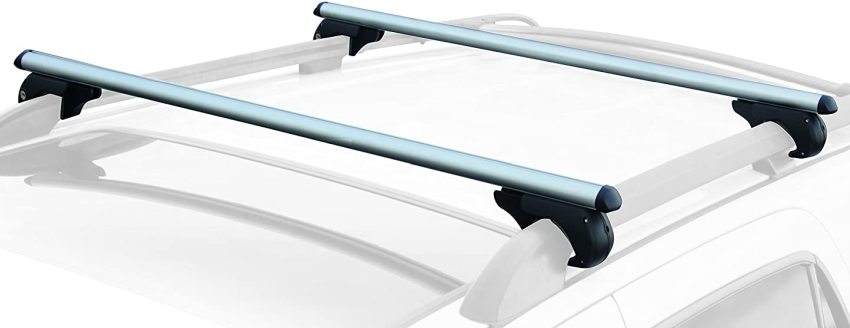
Roof crossbars are installed for exactly this reason: to safely transport heavy items on your roof without damaging the vehicle body. Crossbars can easily support the weight of two kayaks—even extra-long kayaks—making them the safest choice for easy transportation.
But be warned: strapping the kayak directly to the crossbars is not a good idea. The weight of the kayak, the tightness of the straps, and the slight side-to-side shifting that occurs when you drive can all conspire to damage the kayak. Even if you transport it face-down (like you should), the crossbars can scratch or even bend the kayak.
If you are transporting your kayak directly on your roof crossbars, always make sure to use padding.
Cheap Option: Roll up a blanket or yoga mat and use it as padding on top of or around the crossbars. Make sure the padding is securely strapped in place and doesn’t shift around when loading the kayak, otherwise it might slip out and you end up transporting the kayak directly on your roof cross-bars—that’s a no-no!
Easy Option: Cut some pool noodles in half and strap them onto the crossbars. This will be easy if the crossbars are the thinner, square-tube style (like Yakima or Malone makes), but a bit more challenging if your crossbars are thicker (like Thule’s crossbars).
Best Option: Crossbar pads are built specifically for the purpose of wrapping around your crossbars and providing padding/protection for transporting items without a roof rack.
I used the Malone 25-Inch Roof Rack Pads before I bought my current roof racks, and they saved my kayak from damage and made it much easier to load the kayak safely onto the roof crossbars.
Foam Block Carriers
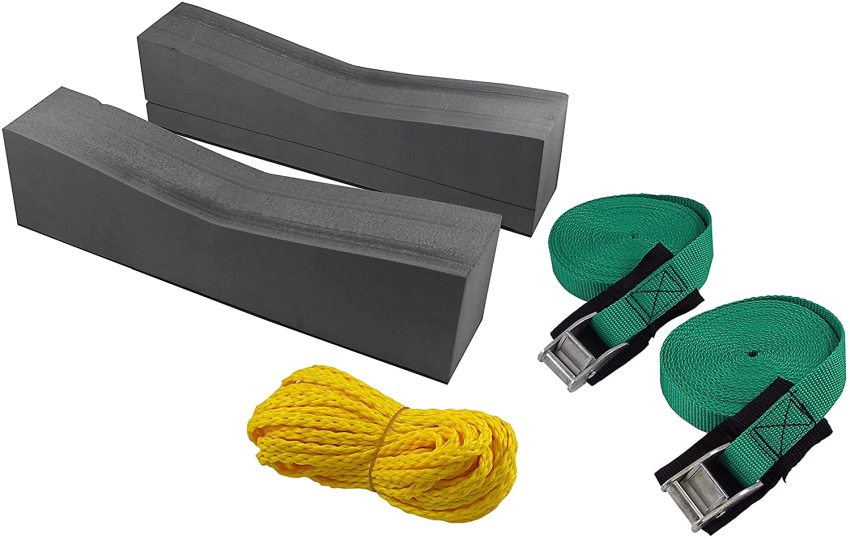
Foam block carriers are designed specifically for transporting your kayak without a roof rack. Here in British Columbia, I see them most commonly used for SUVs and small cars that have neither crossbars nor roof rails capable of installing crossbars.
What makes foam block carriers a great choice is their durability. They’re thick and sturdy enough that they will provide a solid, stable cradle to keep your kayak securely in place while you drive.
There are two basic options to choose from:
– Single Foam Blocks – These are basically two blocks 16-24 inches long, which are placed at the front and rear of the vehicle. They’re sort of a one-size-fits-all approach to loading up your kayak on your roof without a rack. The Propel Paddle Gear Kayak Car Top Carrier Kit is the option I tried out to transport my Pelican Summit 100X on the roof of my Toyota Corolla.
– Multi-Block Carrier – This is the option I wish I’d tried! These are smaller blocks that are bought separately, but they create a more versatile, customizable mounting option. The Level Six Canoe Block, for example, can slide over roof crossbars to serve as padding, or can be placed directly on the roof.
The mounting process using a foam block is fairly straightforward:
- Place the block onto your roof
- Strap it down, running the strap through your windows
- Place the kayak on top of the carrier and strap it down, too.
The good people at SeattleSportsCoTV have a really great, simple video you can follow for how to install your foam carrier:
Now, I want to highlight two potential pitfalls of this mounting method:
- The foam blocks may not be tall enough. When I tried to mount my 14-foot Azul Riot onto the foam blocks (upside down, as recommended), I found my kayak was too deep for the blocks to fully lift off the roof. My seat would have scratched up my roof, so it was a no-go for this larger, deeper-bodied kayak.
- Foam will compress. The closed-cell foam is solid and durable, but it will compress over the course of a few hours. This may cause the straps to loosen, and the kayak will bounce around. You’ll have to re-tighten your cam/ratchet straps every so often just to be certain.
Overall, though, the foam block carriers are a good option for transporting your kayak if you don’t have any kind of roof rack.
“Alternative” Kayak Transporting Options
I want to make something perfectly clear: these “alternative” kayak transporting options will work in a pinch, but they are neither as safe nor as good for your vehicle as the best options listed above. Keep them in mind if your J-rack or cradle suddenly breaks, a critical bolt goes missing, or you have to transport your kayak in an emergency situation and you have no other option to consider.
Pool Noodles
Pool noodles are a cheap and easy option for transporting your kayak without a roof rack. Really, all you have to do is run some quality straps through the hole in the center of the pool noodle, strap that to the roof of your car, and mount the kayak on top. Five minutes of work and you’re done!
The guys over at Fishyaker have a great video on how to do it right:
You can use the sort of pool noodles found literally anywhere—any supermarket, dollar store, and sports goods store. I’ve used the Oodles of Noodles Foam Pool Swim Noodles and found they did a great job in a pinch.
The main downside of this method is that the pool noodles are sitting directly on your roof, which means all of the kayak’s weight is on your car’s body. Also, pool noodles will compress over time, so your padding may wear out after a season or two.
Watch this video for a really cool way to level up your pool noodle roof rack by adding in PVC pipes:
Rolled-Up Towels or Blankets
This was a method suggested over on Reddit, and I think it’s an interesting option to consider if you really have nothing else. After all, you’ve got towels and/or blankets on pretty much EVERY camping, fishing, or hiking trip, so it will work in a pinch.
All you have to do is roll up the towel or blanket to make the thickest padding possible, set it on top of the roof, and place the kayak on top. Once the kayak is strapped down, the padding will stay firmly in place.
Just remember: the thicker the towel or blanket, the better! Over time, the weight of the kayak and the pressure of the straps will cause the towel/blanket to compress, until the kayak is almost sitting directly on your roof.
It’s definitely not the best long-haul travel solution, but it can work for a short drive home.
Foam Camping Mats/Sleeping Pad
Reddit for the win with the suggestions again!
Foam camping mats and sleeping pads are designed to be a bit thicker and less prone to compressing beneath your body weight when you sleep. So it stands to reason they’d hold up better under the weight of your kayak, too.
I’d recommend something like the CUTICATE Foldable Mountaineering Foam Camping Mat, which is easily folded up to provide just the right amount of padding beneath the kayak without placing all of the weight/pressure in one spot on your roof.
Gym Mats
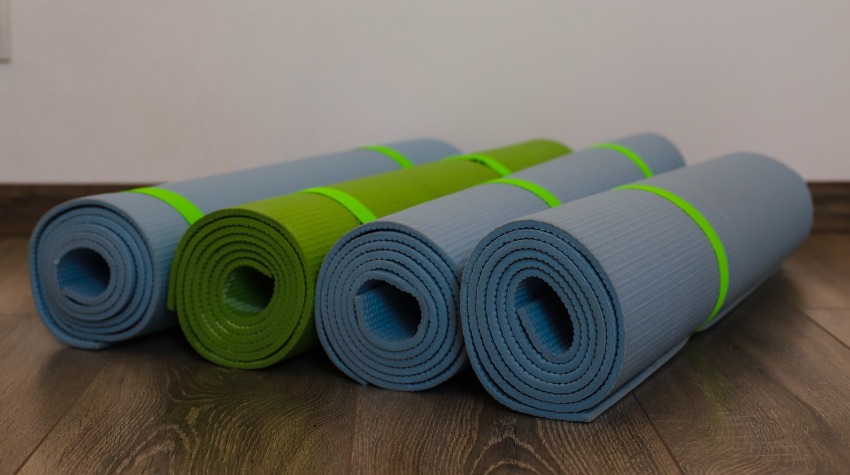
This is an idea that I came up with, and I’ve found that it has worked pretty darned well to protect my roof from pressure dents or scratches.
Look specifically for gym mats used for wrestling, MMA, or martial arts training. These mats offer great cushioning from impact, but the foam padding inside is dense enough that it won’t fully compress beneath the weight of your kayak and the pressure from your tightly-tied straps.
I like the BalanceFrom 2″ Thick Tri-Fold Folding Exercise Mat because its high-density EPE foam is great for my at-home workouts, but also serves perfectly for transporting my kayak in a pinch.
Alternatively, if you’re looking for something to more evenly distribute the weight of your kayak across your entire roof, you can try gym mats like the BalanceFrom Puzzle Interlocking EVA Foam Tiles. With these tiles, you can adapt the dimensions of your padding and add multiple layers (all securely strapped down, of course) for extra protection of both the roof and the kayak you’re transporting.
Foam Mattress
If you really want to go for the simple method and don’t care about how it looks, using a foam mattress as the padding/cushioning for your kayak will definitely do the trick. All you have to do is load up the mattress on your roof rack, place the kayak on top, and strap it all down.
It’s definitely not going to be the prettiest solution, but the foam mattress will distribute the weight of your kayak enough that it won’t likely damage or dent your roof.
For smaller kayaks (6-10’), I’d consider a cot-sized mattress like the Zinus Memory Foam 5 Inch.
For larger and heavier kayaks (anything over 10’), I’d go with something more like the Olee Sleep 8 Inch Ventilated Convolution Memory Foam Mattress, which is a thicker foam mattress specifically designed for heavier sleepers and will bear up better under the weight of the kayak.
How to Safely Strap Down Your Kayak Without a Roof Rack
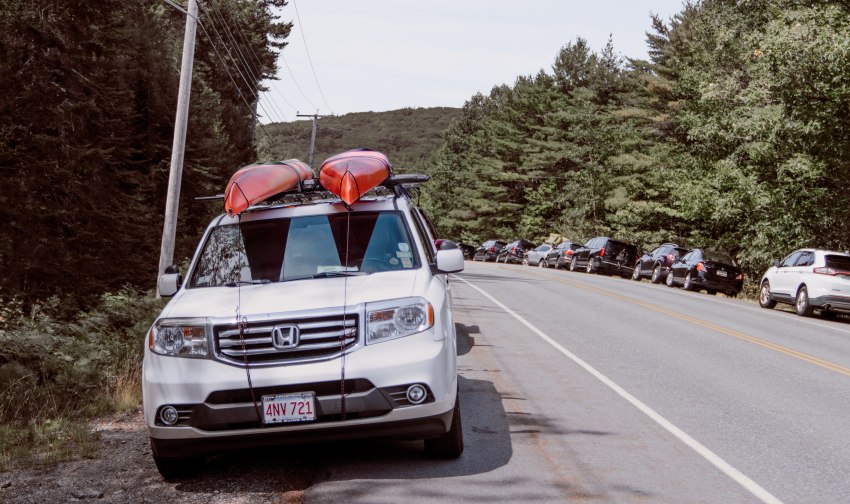
Strapping your kayak down securely is always important, but it becomes absolutely critical for your safety when you’re transporting a kayak without a roof rack.
Think about it: if your kayak is resting on a cradle or in a J-rack, it’s less likely to slide off your car if the straps aren’t fully tight. Sure, it will wobble around, but it should stay mostly in place.
But if the kayak is just sitting on top of your roof—on a blanket, pool noodle, foam block, or rolled-up mat—the strap is the only thing to stop it from sliding around or sliding off.
It’s imperative that you strap everything down tightly—not just the kayak, but also your padding/support.
To strap your kayak down safely without a roof rack:
Step 1: Strap down the padding. If you’re using a pool noodle, run straps through the center of the noodle. If you’re using a foam block, run the straps through the provided groove. If you’re using blankets, mats, or something else, make sure the strap is run through the padding to ensure it’s securely strapped in place on your roof.
Step 2: Strap down the kayak. Place your kayak hull-side-up so the padding is under the gunwales where the kayak is sturdiest. Strap it down IMMEDIATELY—don’t make the mistake of grabbing a coffee or going for other gear. Otherwise, you might forget and start driving off with the kayak unsecured.
Step 3: Use enough straps. Without a roof rack, you absolutely need four straps: two for the hull, and two V-straps for each end of the kayak. The hull straps will run through your windows and secure the kayak’s body firmly in place. The V-straps will connect the bow and stern of the kayak to the front and back of your car, preventing it from sliding around as you drive. You will need all four straps to ensure it’s safely strapped in place!
Step 4: Check all the straps. Before you drive off, check to make sure all of the straps are properly tightened and secured to your car. Any time you stop, give the straps a once-over. The tighter the straps are, the less likely the kayak will bounce around and damage itself or your car.
IMPORTANT: Twist your straps to stop them from humming, buzzing, or vibrating. Not only will it be noisy, but it could actually damage your vehicle or the kayak itself.
Ratchet Straps vs. Cam Straps: Which is Better?
For mounting your kayak, you have two options for straps:
- Cam straps, which use a cam buckle—a buckle with teeth to keep the strap tension once it’s pulled tight.
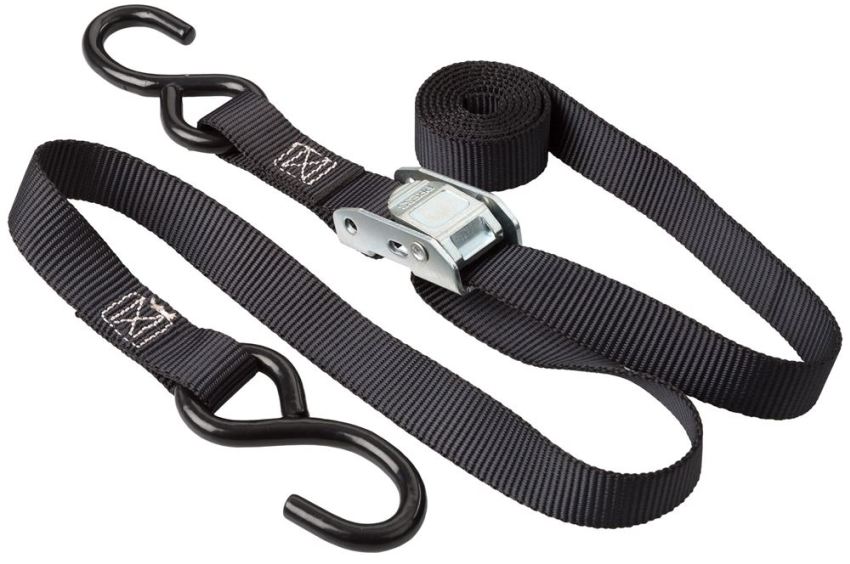
- Ratchet straps, which use a ratcheting system to pull the strap tight.
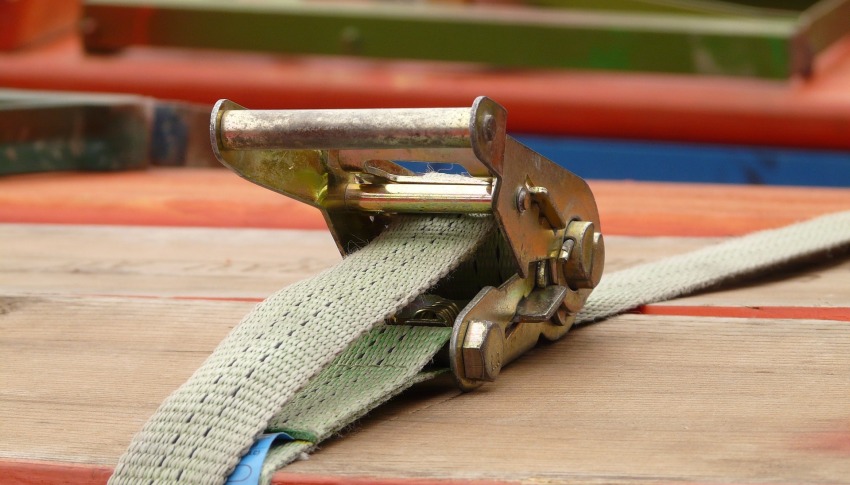
On the face of it, ratchet straps are the better choice.
Cam straps have to be pulled by hand to tighten, while ratchet straps are easily ratcheted tight with far less effort.
Ratchet straps are also easier to adjust, more versatile, and can be adapted to multiple kayaks and sports equipment.
However, there is one serious drawback: ratchet straps are more likely to damage your kayak.
You see, because of the ratcheting system, you can pull the straps much tighter. Pulled too tight, the strap can actually crack, bend, or warp the hull of your kayak.
Ratchet straps are also much more complex. You can spend a lot of time struggling with the ratcheting system trying to figure out what goes where and how to tighten/loosen properly.
To tighten cam straps, all you have to do is pull on the end until it’s as tight as you can make it, and the buckle will hold it securely in place. Loosening is as simple as pressing on the cam to lift the teeth.
In the end, it’s all about what you want/need:
Ratchet straps are more secure and stable, but just be careful not to damage the hull of your kayak.
Cam straps are more user-friendly, but they’ll often take more work to tighten and may require more frequent adjustments.
Potential Dangers of Mounting Without a Roof Rack
As I explained above, there is a risk that you could dent or scratch up your roof if you try to transport a kayak without a roof rack. However, those aren’t the only drawbacks to be aware of.
Here are a few more potential dangers and downsides:
- You may hit your head on the straps while driving. The strap is running through your windows, which means it’s running along the interior ceiling of your car or in the air above your head. If you slam on the brakes while driving, your head may whip forward and hit the straps before your seatbelt can catch you.
- It may scratch your roof or ceiling, or break your sunroof. I couldn’t carry my Azul Riot kayak on foam blocks because the seat would scratch up the roof of my Corolla. Depending on how I mounted it, the seat was actually sitting right on top of the sunroof, which could shatter the glass. Of course, the straps running through the window also are rubbing against the interior ceiling, which could damage the fabric covering.
- Heavy rain/snow/cold leaks in through open windows. It’s unlikely you’ll transport your kayak in snowy weather, but it’s not impossible to be caught by a sudden chill (especially here in Canada) that turns cold kayaking weather into a full-on snowfall. Even during the warmer weather, you run the risk of rain leaking into your car because your windows are at least partially open to accommodate the kayak straps.
When in Doubt, Try a Kayak Trailer
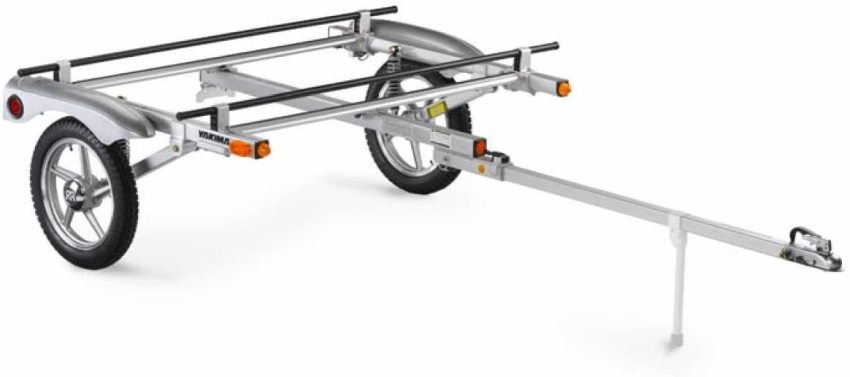
If your vehicle doesn’t have roof rails or crossbars to mount a roof rack—and no possibility of installing one—you could always try a kayak trailer.
Kayak trailers can be lightweight and compact enough to be compatible with smaller vehicles (light SUVs, even sedans, which can pull between 1,000 and 2,000 pounds). All you need is a hitch and you’re good to go. That’s typically an easier and cheaper modification you can make to your vehicle, one that doesn’t involve drilling through the roof/body to mount roof rails.
I’ve done a full list of the best kayak trailers in this article (LINK). Here, you can read all about how to buy the right kayak trailer, what to look for, and how to make sure you’re getting the best bang for your buck.
If you don’t have the time to read the whole article, don’t worry. I recommend either the CE Smith Multi-Sport Trailer or the Yakima Rack and Roll 66 as ideal options for lightweight trailers to pull behind any vehicle with a hitch.
FAQs
Legally, you are allowed to mount a kayak on the roof of your car even without a rack. However, as I explained above, it’s not the safest for either your vehicle or the kayak. If you can, try to get a kayak rack, or at the very least, a set of crossbars to support the weight (with added padding to protect your kayak).
Absolutely! You can throw the kayak into the bed of your truck—hull side up, with a bit of padding beneath to protect it from scratches—and simply strap it down to keep it from sliding out. If you have a truck, it’s incredibly easy to transport your kayak even without a roof rack.
There are all kinds of cool kayak truck racks, including models that can be installed on top of the truck bed or hitch racks that accommodate longer kayaks (14+ feet) for shorter trucks.
Every state has its own laws for “overhauling cargo” (cargo that sticks out beyond the dimensions of the vehicle). However, the Federal Size Regulation law from the U.S. Department of Transportation states that cargo can overhang a vehicle by:
– 4 feet in the rear
– 3 feet in the front
– 4 feet on the sides
As long as your kayak doesn’t exceed that limit, you should have no problem hauling it in the back of your truck.
If it does exceed the 4-foot-in-the-rear limit, consider using a truck bed or truck hitch rack.
Very carefully! You just need to make certain the padding/foam block/pool noodle/etc. isn’t resting directly on the glass. You may have to slide the front padding forward or backward a bit to ensure it’s placed squarely on the metal roof. This could make the weight distribution uneven (shifted farther backward) or make it impossible to transport deeper kayaks (like what happened with my Azul Riot).




